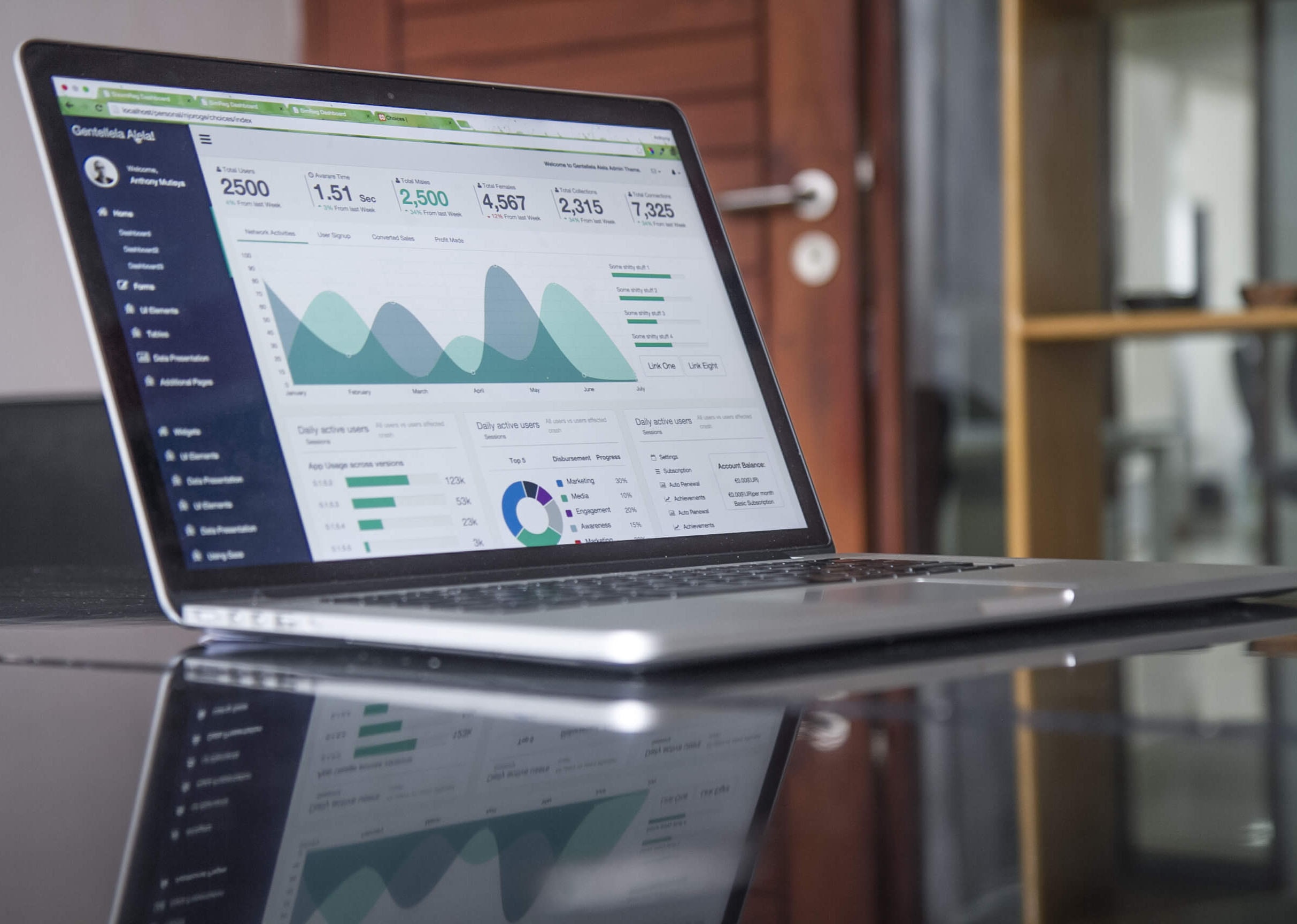As opposed to on-page SEO, which focuses primarily on content and some technical factors, off-page SEO aims to build brand visibility, credibility, and ranking capability through external signals and referral traffic sources.
An effective off-page SEO strategy requires a multi-faceted, ongoing effort across key areas such as backlink building, social presence, domain authority, and awareness-building.
Read on for the complete off-page SEO checklist.
1. Backlink Building
Earning backlinks from external websites remains one of the most important off-page SEO activities for gaining rankings.
Backlinks signal to search engines that a site provides value worthy of endorsement via a link. Google considers the quantity of backlinks along with the quality when attributing authority and relevance.
While low-quality links from spammy or irrelevant sites should be avoided, a diversity of editorial links, guest posts, infographics, and brand mentions can all contribute to improved organic search visibility.
The first step is researching prospects for high-quality backlinks. Potential opportunities include:
Editorial Links
Relevant websites may organically reference and link to content that provides value for their readers.
Producing compelling, timely content assets that publishers can optionally cite represents an ethical approach.
Join 900+ to receive a weekly SEO video from my YouTube channel, which I’ll share, and an actionable SEO tip every week.
Guest Posting
Respected industry publications often accept contributed posts from field experts.
Securing guest author slots allows the inclusion of branded anchor text links interwoven with the article.
Infographics/Visual Assets

Visually engaging infographics, charts, guides, and eBooks invariably get featured across news sites and content hubs.
They also tend to propagate naturally via social shares, earning recurring value.
Broken Link Building
Websites undergoing redesigns or experiencing domain expirations frequently generate pages with broken links.
Conducting analysis to identify such opportunities and suggesting relevant replacement links when appropriate can secure approvals.
Additional Notes
The contextual relevance and anchor text diversity factor significantly in how impactful links become. For example, a shoe store link on a fashion blog gains more SEO influence than having that same link on a sports blog.
Anchor text matters too; having all links use generic “click here” anchors dilutes the ability to connect semantic signals versus thoughtful wording like “handmade Italian leather shoes.”
When actively building links, the velocity also warrants consideration so that efforts seem natural rather than forced.
Tools like Ahrefs allow for the analysis of competitor link profiles, including assessing domains driving the most referral equity. This analysis offers a benchmark for mimicking link velocity rates that avoid raising spam flags.
Ongoing monitoring ensures new links get indexed while further identifying prospects.
2. Social Media Presence

While social media marketing serves obvious benefits for driving brand awareness and direct referrals, platforms like Facebook, Instagram, and Twitter also confer visibility advantages.
Businesses cultivating strong social followings and engagement tend to fare better within SERPs based on implied popularity signals.
The content-sharing capabilities inherent in each platform essentially facilitate earning viral backlinks as users repost compelling assets. Strategic optimization for social can, therefore, become a crucial component within an overarching SEO plan.
With almost 3 billion monthly active users, Facebook remains the dominant platform for consumer brands.
Businesses should maintain active Pages showcasing products, local information, and contact options.
Sharing blog posts natively within Facebook often translates to higher click-through rates versus external links.
Given its foundation on viral imagery, Instagram creates a natural launchpad for driving secondary shares across blogs/news sites.
Curating visually striking photographs and using relevant hashtags boosts discoverability and makes it more likely for influencers to help amplify their reach.
Frequently posting shareable content to Twitter increases site referral potential from retweets. The brevity required helps minimize barriers to shares.
Monitoring relevant conversations using Brand Mentions allows tapping into topics aligned with business interests or location.
Creatively designed Pinboards deliver tremendous referral value based on the nature of Pinterest users actively seeking ideas to replicate.
SEO-optimized Pin descriptions should incorporate target keywords while linking to appropriate website content.
YouTube
Video content earns significant engagement, embed placements, and backlinks. Posting commercials, brand stories, and tutorials on YouTube can fuel higher rankings potential.
Notes on Influencer Marketing

The rise of social media influencers across niches has created many sponsorship opportunities to expand brand visibility.
As their audiences and credibility grow, collaborating with relevant voices draws new eyeballs. Common influencer programs center on:
- Product seeding campaigns to drive reviews among mid-tier channels with decent subscriber bases. The focus centers more on conversion uplift over massive reach per influencer.
- Seeking micro-influencer ambassadors in the 1,000-30,000 follower ranges to promote discounts and special offers tied to strong calls-to-action around sales funnels. Their niche audiences prove very engaged.
- Leveraging affiliate partnerships whereby influencers earn a commission for driving item sales or app installs. This incentivizes constant promotion across their social platforms.
While massively popular social stars with millions of fans seem alluring for brand building, middle and micro-tier voices often generate better returns thanks to loyal niche audiences and more genuine seeming recommendations free of overt commercial overtones.
You can use services like Traackr, Upfluence, and GRIN to easily identify and manage outreach across any influencer tier.
3. Local SEO Optimization
For location-based businesses, optimizing digital presence within map results has become imperative to compete for local conversions.
This relies not only on prominent visibility within Google My Business, Apple Maps, and Bing local listings but also on curating positive local signals like reviews and mentions.
Ensuring complete and consistent NAP (name, address, and phone number) information across key platforms helps avoid duplicate entries that diffuse authority.
Some core sites to continually verify and monitor include:
- Google My Business: Serving as Google’s proprietary local listings platform, optimizing this profile remains essential for local pack domination.
- Facebook Places: As the world’s largest social network, Facebook Business Pages similarly influence geo-targeting.
- Bing Places: Microsoft’s platform underpins results in Cortana and their Maps interface, improving visibility.
- Apple Maps: All iPhone users rely on Apple Maps for directions, making this a vital inclusion.
- Industry Directories: Relevant niche and regional directories like TripAdvisor and YellowPages warrant claimed listings.
The inherent social nature behind reviews earns heightened authenticity versus generic website testimonials. So, proactively seeking validated feedback across Google, Facebook, and industry sites like Yelp can bolster reputation.
What’s more, optimizing pages and posts with locally-targeted long-tail keywords can strengthen on-theme signals. Integrating zip codes, city names, and geo-modifiers (e.g., “best Seattle tax accountants”) improves relevance versus just generic terminology.
4. Domain Authority and Trust
Search engines gauge overall site legitimacy and consumer sentiment in determining rankings eligibility. A site launching last month usually cannot surpass an industry mainstay with years of recognition.
While earning links and social signals accelerates credibility, domain authority also stems from technical qualities and trust indicators.
Registration Length
Typically, the longer a domain stays actively registered, the more positive weighting it accrues. Savvy SEOs actually seek out expiring domains from defunct sites related to their niche for transfer potential.
Hosting Factors
Quality web hosting with ample server resources signals a business willing to invest in long-term presence versus fledgling operations. This earns greater favor.
Contact Pages
Complete “About” pages, leadership bios, and prominently visible contact demonstrate transparency. Avoid using only web forms.
Domain Diversity
Links distributed across multiple branded domains strengthen diversity and expand keyword targeting scale. Just don’t overdo it.
Effective 404 Handling
Sites frequently break links when migrating domains or restructuring pages.
Implementing customized 404 error pages with neat explanations, contact info, and navigation links aids in recovering lost link equity.
While search engines crack down on tactics like spammy redirects and doorway pages, ethical tactics that organically improve UX cues tied to domain trust and authority continue growing in importance for sustainable rankings not at risk of volatility.
5. Monitoring and Measurement

The iterative nature of SEO necessitates constant tracking of metrics to diagnose issues that are impeding your progress.
Rather than sporadically checking weekly rankings, leveraging structured data within platforms like Google Analytics, Search Console, and crawling tools enables optimizing actual consumer behavior.
Core KPIs to continually monitor include:
- Rankings Movements: Fluctuations within keyword rankings help segment highest opportunity targets from more competitive sectors, warranting initial link building.
- Organic Traffic: Direct uplift measurements for qualified visitors coming from organic listings. Lower ceilings likely signal issues.
- Referral Traffic: Seeing percentages shift across key referrers determines where to double down on link-building or social engagement efforts.
- Total Backlinks: New linking root domains and type variations. Velocity changes may reflect adjustments needed.
- Click-Through Rates: Mining search query data and filtering high impression keywords by CTR shows topical centers with the best engagement.
Expanding beyond just Google data, Bing Webmaster Tools similarly provides indexed page counts, crawl stats, and alternate rankings. Yahoo Site Explorer also allows backlink analysis, including page trust scores.
By continually analyzing metrics instead of extrapolating meaning from momentary ranking scans, data issues hindering SEO progress emerge sooner.
The key is then researching probable causes and iterating appropriately, which is the whole foundation of effective SEO.
6. Site Speed Optimization
Page load times represent a vital ranking factor, given its huge correlation with user experience. Latency stemming from unoptimized images, absence of caching, or inefficient code can drastically hike bounce rates.
Google Pagespeed Insights or similar free tools allow easily auditing site speed metrics and pinpointing fix avenues:
- Image Optimization: Compressing photos using TinyPNG or Kraken.io while utilizing lazily loaded React libraries slashes unnecessary bloat.
- Caching: Static content gets cached through CDN endpoints nearest visitors. This reduces roundtrip server requests.
- Minification: Removing whitespace and comments from CSS/JavaScript files further condenses code for faster parsing.
- Using a CDN: Distributing static assets across geographically dispersed content delivery networks cuts latency.
For most sites, pursuing 80+ scores on mobile PageSpeed Insights and under 3-second load times should satisfy baseline optimization needs without engineering overcustomization.
7. Mobile Optimization
Given Google’s mobile-first index prioritizing pages optimized for smartphones, a responsive mobile experience has grown mandatory.
Preventing pop-ups, expanding tap targets to account for fat finger clicks, and streamlining navigation for vertical thumb reach all help create finder user engagement.
Using Google Mobile Friendly testing affirms basic functionality is free of errors. More advanced mobile optimization encompasses:
- AMP Implementation: Google’s AMP project allowing near-instant mobile page loads aids visibility within the zero-click #TopCarousel, the carousel of featured snippets, and other highlighted results that appear at the very top of Google search results pages.
- App Schema Markup: Structured data communicates to Google about native apps for indexing within results.
- App Store Optimization: Proper keyword targeting within Play Store and Apple App Store listings begets heightened discoverability and downloads.
8. Competitor Benchmarking
Gauging competitors’ respective SEO positioning exposes tactical and topical gaps to address as part of an evolving strategy.
While outright replicating competitors’ efforts often proves unfeasible due to trust and domain authority dynamics, smart directional analysis prevents needless oversights.
Link Profile Analysis
Link intersect reports within tools like Ahrefs reveals site domains earning the most influential links industry-wide.
Pursuing contributor placements across these trusted properties then becomes prioritized.
Social Media Activity
Most social platforms furnish competitor engagement statistics surrounding fans/followers counts plus content likes, shares, and comments.
Observing higher-performing content formats guides analogous local testing.
Google Search Results

Scanning organic SERP listings shows relative rankings dominance and advertisement adoption across target keywords.
This indicates SEM urgency while informing optimal anchor text optimization needs.
Domain Authority Diagnosis
Trusted Score and other domain authority metrics housed within Moz and Semrush diagnose technical issues limiting SEO growth. Pursuing fixes effectively strengthens core website health.
Tactically pursuing competitor alignment across key areas—social proof, click potential, trust signals, and topical weighting—allows marginally closing expert gaps despite often massive industry head starts.
9. Promoting Brand Awareness
Cultivating an authoritative brand presence through off-page activities beyond just link building also bolsters conversion rate optimization efforts.
While infrequently viewed as direct SEO, brand-building tactics such as press mentions, guest interviews, and community engagement dramatically expand visibility.
- Content Amplification Networks: Mass distribution partners like Outbrain (used by major publishers) enable sponsored placement of articles/videos across 100k+ sites.
- PR Outreach: Seeking brand references within roundups or listicles built by national news outlets pushes relevance with secondary traffic benefits.
- Guest Interview Appointments: Leveraging relevant industry credentials to contribute insights on popular podcasts, small business shows, and vlogs, humanizes sellers through expertise signaling.
- Reddit Engagement: Actively participating in Ask Me Anything (AMA) discussions and Reddit threads related to the business category stimulates traction.
- Quora Participation: Providing thoughtful answers to commonly searched queries within the space seeds authoritative portal goodwill through personal branding.
The compounding effects of continually seeking brand integration opportunities add up over time to ultimately influence consumer perception and funnel interest downstream.
10. Compliance With Guidelines
Major search engines like Google routinely refine their algorithms to deflate optimization tactics, flouting recommended guidelines in favor of manipulative shortcuts.
Experiencing sudden rankings volatility or manual spam penalties threatens business stability. Commonly implicated issues involve:
- Siterips: Copying full pages or articles from other sites undermines the original content integrity critical for relevance. Avoid duplicate content pitfalls.
- Doorway Pages: Heavily optimized pages solely built to rank keywords should employ natural phrasing tied to legitimate user/search intent data.
- Disavowing Spam Links: Periodically checking inbound links and disavowing clear violations via Google Search Console protects page trust.
An ethical, white-hat SEO strategy anchored around enhancing the actual user experience across multiple defined touchpoints alleviates much of the compliance burden site owners otherwise face.
Still, actively monitoring for recommended fixes provides helpful insurance for safeguarding rankings.
11. Structured Data Implementation
Implementing schema markup enables search engines to better understand website content, leading to enhanced presentation within SERPs. This visually differentiated presentation builds trust and authority cues.
Common schema types include:
- Product Schema: Highlights details like price, availability, and ratings for e-commerce sites within search listings.
- Job Posting Schema: Job sites can tag openings with fields like skills, salary ranges, and geography to feature career ads more prominently.
- Local Business Schema: Local sites can call out key details like location categories, hours, and contact info for quick lookups.
- Breadcrumb Schema: Breadcrumbs help communicate site architecture and improve navigation experiences.
- Video Schema: Publishers can tag creator details, durations, and descriptions to aid video SEO. Closed captioning also becomes mandatory.
- Event Schema: Event pages can highlight speaker specifics, dates, locations, and ticketing logistics structured data.
Implementing JSON-LD, RDFa, or Microdata specifications allows for conveying entity relationships in a machine-readable format. This enhances presentation and listings expansion.
12. International SEO Adaptation
For global brands targeting international visitors across language barriers and cultural nuances, custom off-page optimization aligned with regional search behaviors and competitive dynamics proves critical.
Best practices include:
- Local Link Building: Identifying contextually relevant foreign sites for earning backlinks and references builds locally impactful authority signals.
- Location Pages: Creating geo-targeted landing pages with city names/currencies helps connect conversion data to proper regional sources.
- Geotargeting Social Posts: Tailoring social media messaging and hashtags toward relevant countries and cities earns more evident engagement analytics.
- In-Region Competitor Tracking: Monitoring keyword rankings and web visibility against other domestic players within target expansionary countries informs optimization urgencies per market.
- Multilingual Keyword Alignment: Researching popular local keyword queries to pursue translations and equivalent targeting widens relevance.
Adapting technical components like Hreflang tags and optimizing on-page elements, including tourism listings and location schema, further boost international visibility.
The underlying content, messaging, and assets should localize across dialects without overt Americanization.
Wrap-Up
Off-page optimization tactics enable businesses to control branding narratives, earn recognition, and build credibility integral to securing competitive visibility.
By diligently cultivating backlinks, social media assets, reviews, and other external validation cues that mimic genuine consumer engagement, companies can ascend SERP rankings without relying on just on-page factors.
Effective execution requires a cross-channel, integrated strategy with deliberate tracking. Teams willing to make off-page SEO central within lead generation efforts achieve substantial conversion growth and revenue acceleration over the long term.
Also Read: 8 Best Content Optimization Tools


